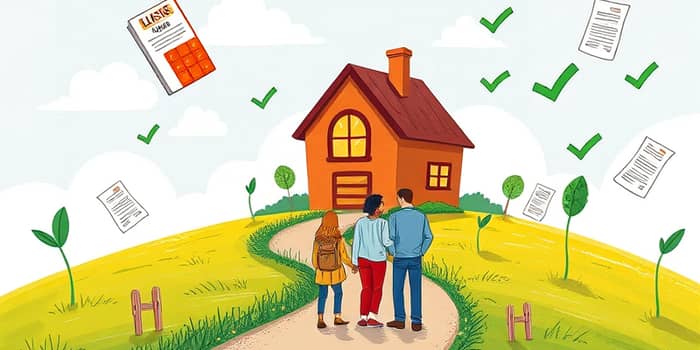
Buying a home is more than a transaction—it’s the realization of dreams, stability for your family, and an investment in your future. Yet, the mortgage process can feel like navigating a maze. This guide breaks down each stage into clear, actionable steps so you can move forward with confidence and excitement.
Before you start touring houses, understanding your financial picture is crucial. Lenders review a variety of factors to determine how much you can borrow. Focus on the key metrics that influence your approval and interest rates.
Begin by examining your income, debts, assets, credit history, and monthly expenses. A healthy debt-to-income (DTI) ratio threshold—typically below 43%—signals to lenders that you can manage your obligations alongside a mortgage payment.
With your budget in mind, follow these core phases to move from dreamer to homeowner:
Choosing the right mortgage type can save you thousands over the life of your loan. Compare your options carefully to find the best fit for your situation.
First-time buyer programs often offer low or no down payments, flexible credit guidelines, and assistance with closing costs. Always ask lenders about gift funds or alternative credit evaluations, such as rent payment histories.
Gathering comprehensive paperwork early in the process can prevent delays and requests for additional information. Being organized demonstrates responsibility and speeds up your approval.
As the underwriter reviews your file, they will verify income stability, credit history, and asset reserves. The appraisal confirms that the home’s value aligns with the loan amount, protecting both you and the lender.
Staying proactive and informed through closing will ensure you cross the finish line without setbacks. Follow these recommendations to maintain momentum:
If you’re not yet ready for a traditional mortgage, creative options exist. Rent-to-own agreements let you lease a property with the option to purchase later, often crediting a portion of rent toward your down payment. This can be an excellent bridging solution for those building credit or saving for a larger down payment.
Avoiding missteps can save time, money, and frustration. Be mindful of these frequently encountered challenges:
Securing a mortgage and closing on a home is a transformative achievement. By following a structured approach, staying organized, and seeking expert guidance when needed, you can turn the complex into the achievable. Remember that every step you take brings you closer to the pride and security of homeownership.
As you embark on this exciting journey, keep your goals in sight and trust in the process. The keys to your new front door are within reach—armed with knowledge, preparation, and determination, you’ll cross the threshold into your dream home.
References













